From charter contracts to a possible dedicated fleet, ICE deportation flights are at a turning point.
On Wednesday, 20 August 2025, NBC News broke an exclusive story reporting that US Homeland Security Secretary Kristi Noem is exploring the idea of creating an airline dedicated to Immigration and Customs Enforcement (ICE) deportation operations. According to the report, ICE would use a new “influx of funds” to potentially establish its own fleet, removing the need to rely on charter operators and contractors.
While costly, the move could allow ICE to double the number of deportations each month. Former ICE Chief of Staff Jason Houser told NBC that under the Biden administration, the agency oversaw roughly 15,000 deportations monthly using between 8 and 14 chartered aircraft. Doubling that number would likely take about 30 aircraft, Houser said. With President Trump calling for one million deportations annually, that would require nearly 83,300 removals per month.
There’s no way that number can be achieved under the current system. Hence, the discussion surrounding the creation of an ICE-run airline.
Buying airplanes isn’t cheap. New jets can run anywhere from $80 million to $400 million apiece, putting a fleet purchase squarely in the multibillion-dollar range. Thanks to a $30 billion appropriation for deportation efforts in Trump’s “Big Beautiful Bill,” funding itself may not be the biggest hurdle. Instead, the challenge would be building and running a functioning airline, which would require pilots, flight attendants, mechanics, medics, security officers, and regulatory compliance teams.
For now, though, ICE Air remains a patchwork of charter contracts and subcontracted carriers. And that patchwork is a fascinating one. If you’ve ever spotted a plain white Airbus or Boeing 737 at places like Miami, Mesa, or San Antonio with no obvious airline branding, there’s a good chance you were looking at an ICE flight. From established charter specialists to young budget airlines, a surprisingly diverse group of operators keeps ICE deportation flights moving every day.
Here’s a closer look at who’s doing the flying.
The Prime Contractor: CSI Aviation

CSI Aviation, an Albuquerque, New Mexico-based charter broker that has managed ICE flight contracts for decades, is the leading player in ICE Air Operations.
- CSI has signed contracts worth more than $650 million in the last three years, including a no-bid contract valued at up to $219 million (March–August 2025, extendable to February 2026…at the time of this writing, no extension has been publicly acknowledged).
- CSI does not operate aircraft directly. Instead, it subcontracts with a mix of commercial and charter airlines to conduct deportation missions.
- The company has received over $1.6 billion in ICE contracts across multiple presidential administrations.
This brokerage model means ICE avoids directly owning aircraft, but also ties its operations to whichever carriers are willing and available.
For the airlines, these contracts can be lucrative and predictable. Flights are scheduled regularly, with carriers guaranteed payment for a minimum number of hours and penalties assessed if ICE cancels on short notice. That kind of steady government work is highly attractive in the otherwise cyclical charter market.
The Subcontractors: Who Actually Flies Deportation Missions?
GlobalX (Global Crossing Airlines Group)

- Headquarters: Miami International Airport (MIA)
- Fleet: 18 Airbus A320 family aircraft (10 A320-200s, 8 A321-200s, with 4 A319-100s on order)
- Role: Currently the largest ICE flight operator–by far–, responsible for nearly 80% of removal flights in 2024.
- Revenue Impact: Emergency five-year contract signed in Sept. 2023, expected to generate $65M annually.
- Other Work: Sports charters and entertainment tours (Lady Gaga, Bad Bunny).
GlobalX’s dual identity—flying celebrity tours one week and ICE deportation flights the next—highlights the diverse charter market where carriers often adapt to very different missions.
Avelo Airlines

- Headquarters: Houston, Texas
- Fleet: 22 Boeing 737s (7 -700s, 13 -800s)
- Role: Began ICE operations in May 2025, flying three aircraft from Mesa, Arizona.
- Context: Facing financial pressure, CEO Andrew Levy described the ICE deal as “too valuable not to pursue.”
- Backlash: Protests in California and Connecticut, though the airline attributes its recent West Coast retreat to broader financial restructuring.
Avelo is the only scheduled passenger airline currently flying ICE deportation flights. For a young airline looking for financial stability, steady ICE contracts provide a buffer against seasonal swings in leisure demand.
Eastern Air Express (part of Eastern Air Holdings)
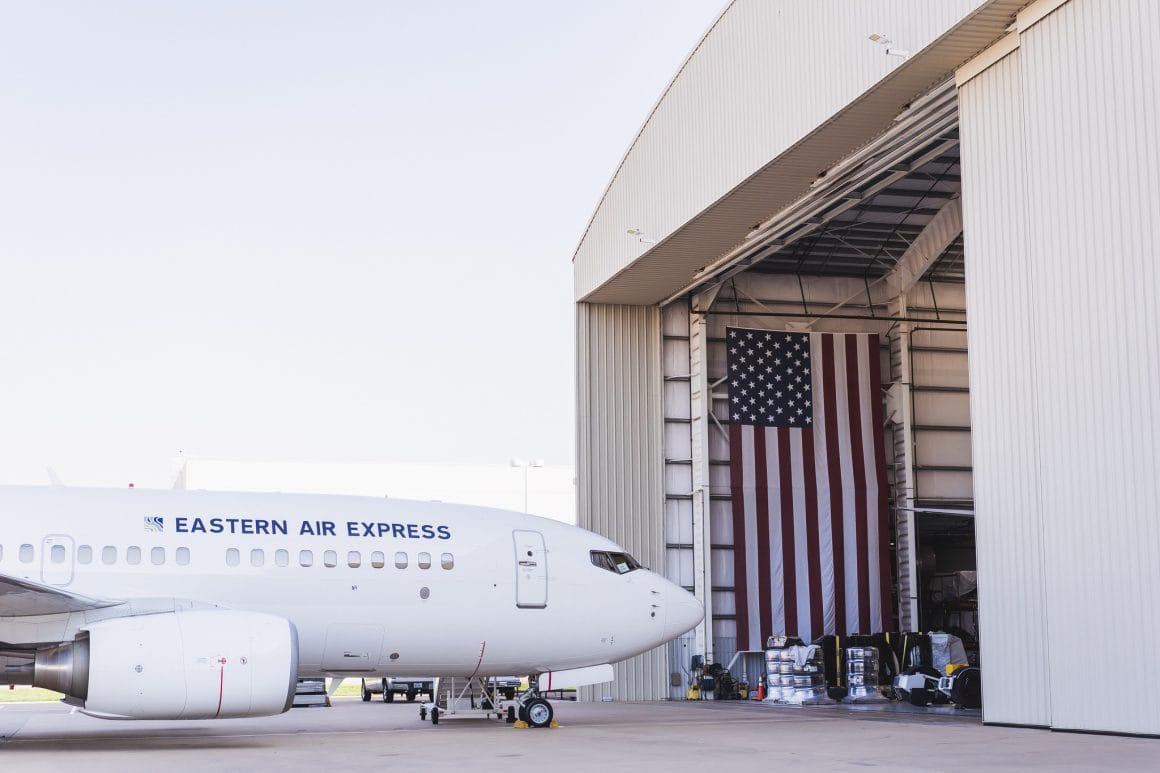
- Headquarters: Kansas City International Airport (MCI)
- Fleet: 22 Boeing 737s (300s, 400s, 700s, 800s)
- Role: Subcontractor via CSI, began flying deportation missions in 2025.
Eastern Air Express can trace its roots back to the original Eastern Airlines, founded in 1926 and once one of the nation’s “Big Four” carriers that shaped commercial aviation in the United States. Revived through Dynamic International Airways’ 2018 rebrand, the Eastern name is now associated with long-haul Boeing 777 operations. The company also acquired Hillwood Airways in 2023, rebranding it as Eastern Air Express.
Omni Air International (subsidiary of Air Transport Services Group)
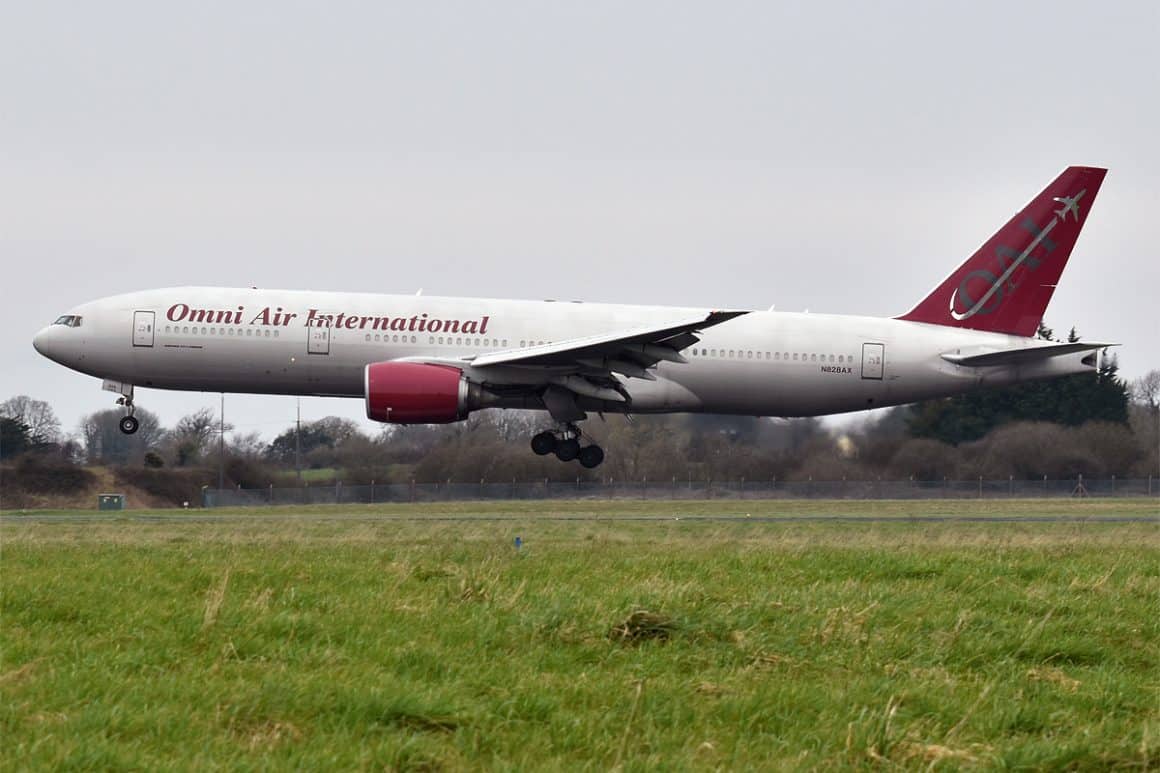
- Headquarters: Tulsa International Airport (TUL)
- Fleet: 15 aircraft (12 Boeing 767s, 3 Boeing 777s)
- Role: Operates “special high-risk charters” for detainees unsuitable for commercial flights.
Omni is already known in the charter industry for long-haul military and VIP missions, and ICE deportation flights fit into that same niche.
World Atlantic Airlines (Caribbean Sun)
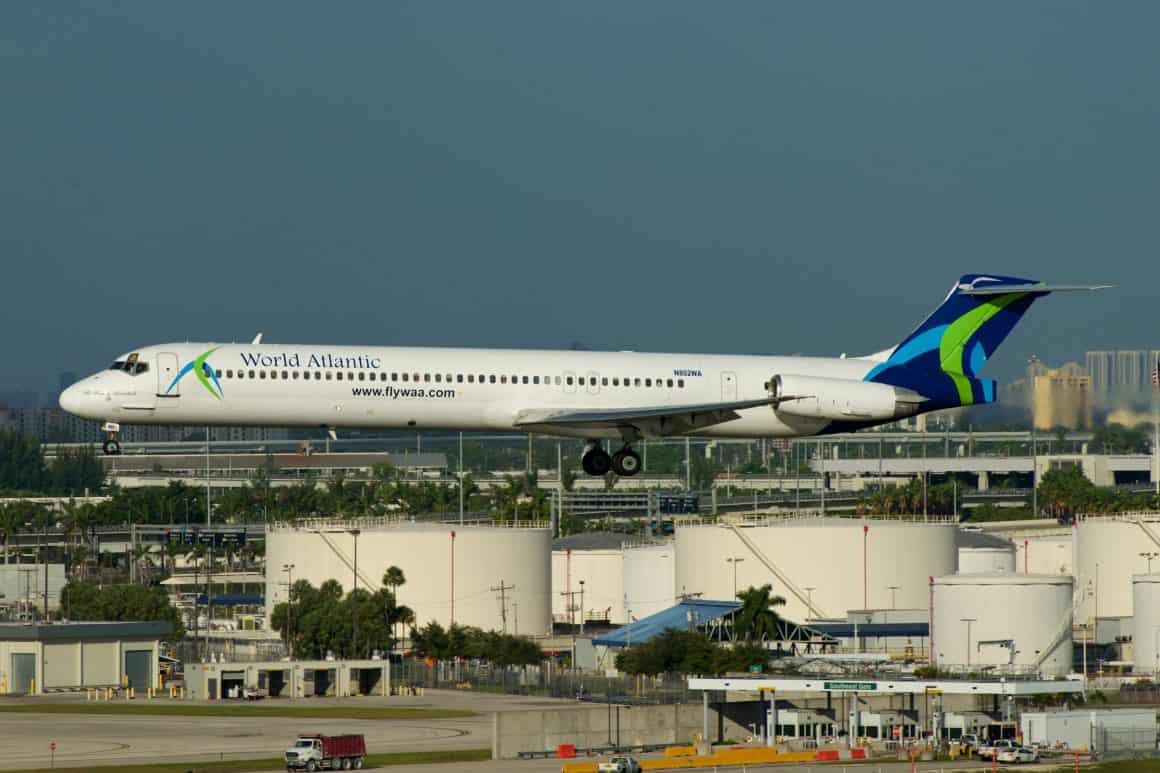
- Headquarters: Virginia Gardens, Florida
- Fleet: 5 McDonnell Douglas MD-83s
- Role: Historically filled in when iAero Airways could not. Active ICE partner since 2013.
World Atlantic’s aging MD-80 series jets may be rare in US skies today, but they remain useful for charter work.
Other Occasional Operators
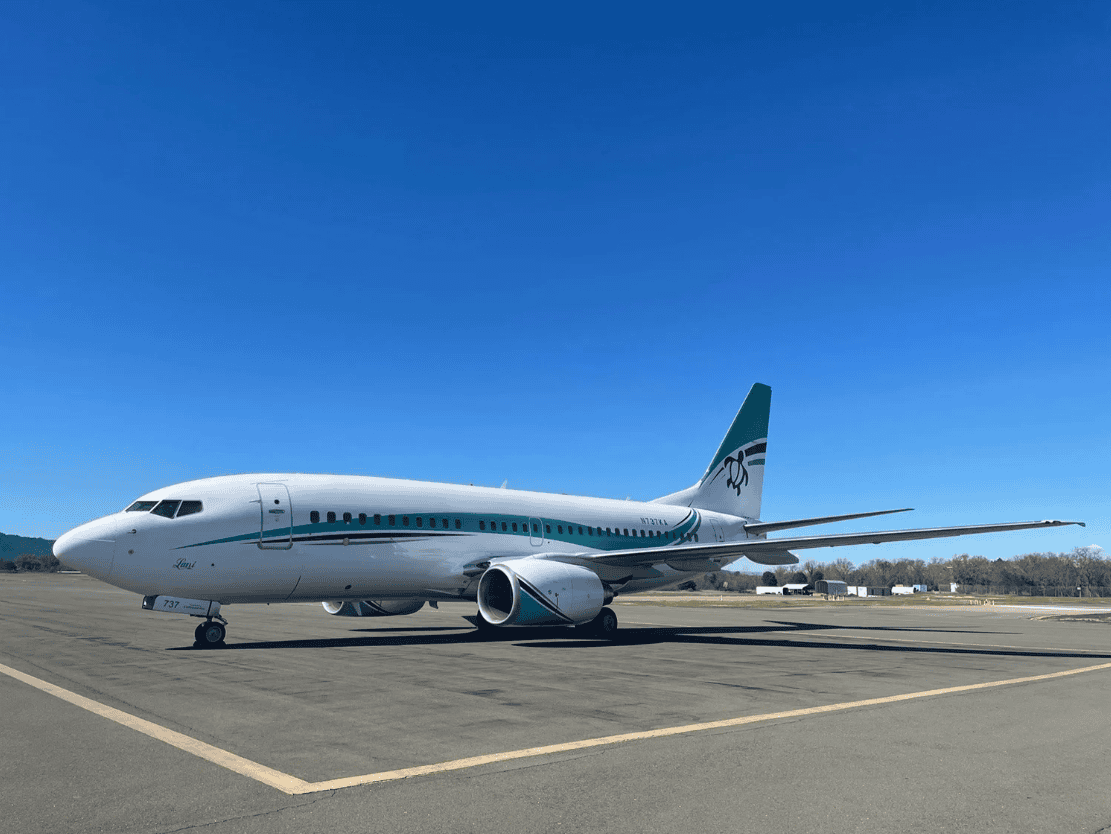
- KaiserAir – An infrequent player, stepping in sporadically for ICE flights when needed.
- Gryphon Airlines (ATS)—Gryphon primarily uses Gulfstream jets to carry out long-distance ICE deportation flights to destinations in Africa, the Pacific, and Europe. In one instance, a Gryphon Air Gulfstream was chartered in March 2025 to fly eight Nepali citizens deported from the United States back to Nepal.
- GEO Transport, Inc. (subsidiary of GEO Group) – Uses contracted aircraft, occasionally including large military lifts such as the C-5M Super Galaxy, under a five-year CSI subcontract (expected revenue $25M annually).
Historical Shifts: From iAero to Military Aircraft and Back
The current roster of subcontractors reflects major changes in the last few years. For more than a decade, iAero Airways (formerly Swift Air) was the primary ICE charter provider. At its peak, the airline operated nearly 60 ICE deportation flights per month and earned about $4 million weekly. But after filing for bankruptcy in 2023, its role collapsed, creating opportunities for GlobalX and Avelo.
Early in Trump’s second term, ICE briefly relied on military aircraft for removals. By March 2025, however, the practice was largely abandoned due to inefficiency and high cost. The return to civilian charters restored demand for CSI’s network of private carriers.
| Airline | HQ / Base | Typical Aircraft | Role in ICE Operations | Notes |
|---|---|---|---|---|
| GlobalX (Global Crossing) | Miami, FL (MIA) | Airbus A320 family (A320-200, A321-200) | Primary subcontractor via CSI | Operated most removal flights in 2024; also sports & entertainment charters |
| Avelo Airlines | Houston, TX | Boeing 737-700/800 | Subcontractor via CSI (since 2025) | Three aircraft based at Mesa for ICE; only scheduled passenger airline in this list |
| Eastern Air Express | Kansas City, MO (MCI) | Boeing 737-300/400/700/800 | Subcontractor via CSI | Entered ICE rotation in 2025 |
| Omni Air International (ATSG) | Tulsa, OK (TUL) | Boeing 767-200/300, 777-200 | Special high-risk & long-haul charters | Used on intercontinental missions and for detainees unsuitable for commercial flights |
| World Atlantic Airlines | Virginia Gardens, FL | McDonnell Douglas MD-83 | Historical subcontractor and overflow | Active since 2013; took more work after iAero bankruptcy |
| KaiserAir | Oakland, CA | Boeing 737 variants, Gulfstreams | Occasional subcontractor | Sporadic participation |
| Gryphon Airlines (ATS) | Mesa, AZ (AZA) | Small jets (14–16 seats) | Rare long-distance missions | Used for Africa, Europe, Pacific routes |
| GEO Transport, Inc. (GEO Group) | Boca Raton, FL | Uses contracted or military aircraft | CSI subcontract | Five-year deal; ~$25M per year |
| Swift Air / iAero Airways (hist.) | Miami, FL | Boeing 737-400/800 | Former primary subcontractor | Bankrupt in 2023; work shifted to other carriers |
Flight Patterns and Hubs

ICE Air Operations are centered around five primary hubs:
- Phoenix-Mesa Gateway Airport (AZA) | Mesa, Arizona
- San Antonio International Airport (SAT) | San Antonio, Texas
- Miami International Airport (MIA) | Miami, Florida
- Alexandria International Airport (AEX) | Alexandria, Louisiana
- Brownsville South Padre Island International Airport (BRO) | Brownsville, Texas
One of the most well-known facilities is the “Alligator Alcatraz” site at the Dade-Collier Training and Transition Airport (TNT) in the Florida Everglades, a former training airport now dedicated to ICE operations.
Schedules are unpublished, but flights reportedly operate daily from each hub.
Regional Distribution
According to 2025 data compiled by flight trackers and advocacy groups, ICE deportation flights are heavily concentrated in the Northern Triangle countries of Central America:
- Guatemala: Between 48 and 54 flights per month (May–July 2025).
- Honduras: Between 35 and 49 flights per month.
- El Salvador: 17 to 22 flights per month.
- Mexico: Roughly 8–15% of monthly removals, with a dip in July 2025.
Flights to South America average around 25–35 per month, while Africa receives 10–13 deportation flights monthly. These flights often require long-range aircraft such as Omni Air’s 767s and 777s or small Gulfstream jets provided by Gryphon.
Domestic Shuffle Flights
An often overlooked aspect of ICE Air is the large number of domestic transfer flights, known as “shuffle flights.” These flights move detainees between detention facilities across the United States before their international departure.
- In July 2025 alone, watchdogs tracked 727 shuffle flights, compared with 207 removal flights.
- These flights are critical for capacity management, as detention centers frequently reach their limits.
- Aircraft used are often the same narrowbodies that later fly deportation missions, meaning carriers like GlobalX may operate multiple domestic hops before a removal flight abroad.
Aircraft Utilization and Routing
Operationally, ICE deportation flights mirror charter airline logistics:
- Multi-stop routings are common. A single flight may carry detainees to multiple destinations in Central America to maximize efficiency.
- Long-haul missions to Africa or Europe sometimes use combination aircraft or require fuel stops along the way.
- Because flights operate from only five hubs, detainees are often transported long distances domestically before their deportation—sometimes involving two or three separate flights.
Scale of Operations
Monthly totals in 2025 illustrate the scale:
- May 2025: 190 deportation flights.
- June 2025: 209 flights (record high since Sept. 2021).
- July 2025: 207 flights.
Adding shuffle flights, total ICE-related aircraft movements are far higher, often exceeding 900 flights per month.
The Cost of Contracting vs. Owning

Each deportation flight costs roughly $100K–$200K, with hourly rates around $25K. By the end of July 2025, more than 1,000 flights had already been flown, suggesting annual spending well into the hundreds of millions.
Comparisons to the commercial airline sector are revealing. A domestic US airline typically targets 10–15 hours of daily utilization for its aircraft to maximize revenue. ICE charters, by contrast, often operate at lower utilization rates but carry guaranteed revenue from the government. For carriers like GlobalX and Avelo, ICE work represents high-margin flying that can stabilize finances even when passenger markets are soft.
If ICE were to buy its own fleet, it would remove airlines from public criticism but inherit all the responsibilities of a commercial operator—recruiting staff, training crews, maintaining aircraft, and managing scheduling and compliance.
A Decision with Significant Implications
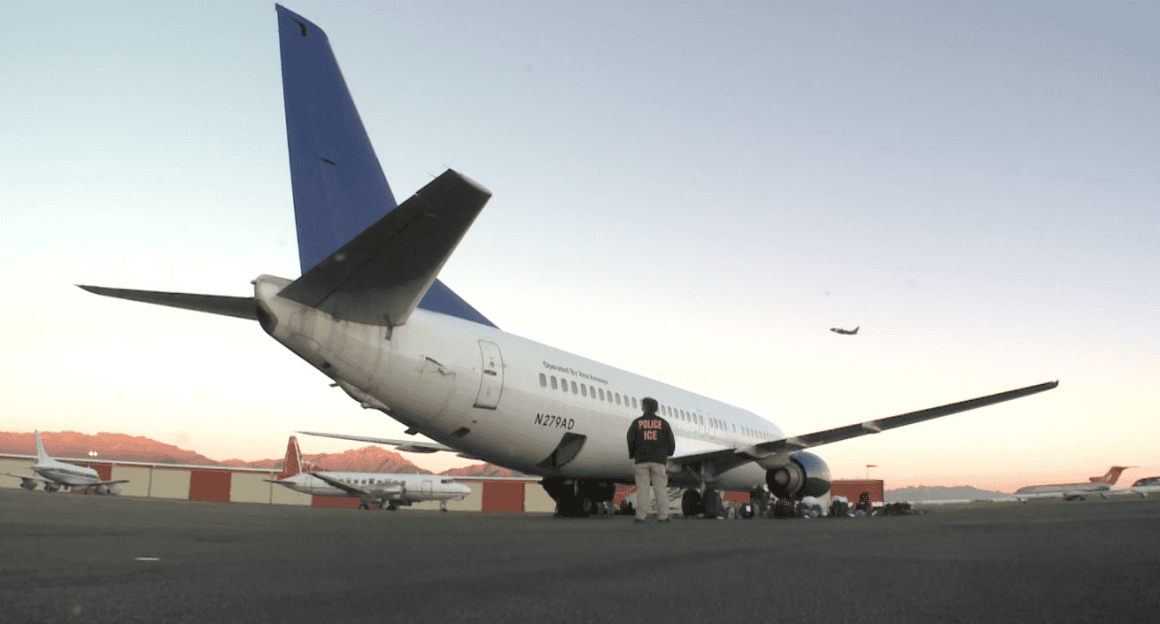
The future of ICE Air may be at a crossroads. For years, deportation flights have been carried out through a patchwork of charter operators, brokers, and subcontractors. But with Homeland Security Secretary Kristi Noem openly floating the idea of a dedicated ICE-run airline, the discussion is shifting from routine contract renewals to the possibility of a government-operated fleet.
From an aviation perspective, that would be a seismic change. Building an airline from scratch would make ICE responsible for everything a commercial carrier manages every day: pilot and cabin crew training, FAA compliance, aircraft acquisition and maintenance, labor agreements, and long-term fleet planning. While agencies like the US Marshals Service operate a handful of aircraft, no federal agency has ever run a passenger airline at scale.
Economically, the key debate is whether ICE would own or lease its fleet. Leasing narrowbodies such as Airbus A320s or Boeing 737s would lower the up-front cost and offer flexibility, while outright ownership would give the agency full control over utilization. Either way, staffing requirements would be immense. A fleet of 30 aircraft, using commercial norms, could require thousands of employees across pilots, dispatchers, mechanics, medics, and security personnel.
The ripple effects wouldn’t stop there. For airlines like GlobalX and Avelo, ICE contracts provide steady, high-margin flying that helps balance their books. If ICE transitions to its own fleet, those contracts could vanish, forcing carriers to chase more volatile charter business. On the flip side, some airlines that have faced protests for their ICE work might quietly welcome being removed from the equation.
Operationally, a dedicated ICE airline could offer efficiency gains. Today’s mix of subcontracted carriers leads to multi-stop routings, extensive “shuffle flights” moving detainees between facilities, and logistical complexity. A standardized fleet with dedicated scheduling could streamline operations and reduce costs over time. Still, standing up an airline of this size would take years, and the federal government is not exactly the poster child for moving quickly.
It bears watching how this all plays out. Deportation flights are a small slice of the US air transport system, but they are unusual in how they bring together government funding, specialized logistics, and private-sector flying. If ICE does move ahead with its own airline, it could reshape not only immigration enforcement but also the unique segment of government charter aviation—a market that, until now, has quietly thrived behind the scenes.
For the moment, ICE Air remains a fleet you won’t find in any published timetable. But if you’ve ever spotted a plain white 737 or A320 taxiing at sunrise from Mesa, Miami, or San Antonio, you may have already seen it in action.
